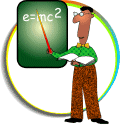The Renaissance and Reformation
 --Lecture
Notes for Topic 2.1.4-
--Lecture
Notes for Topic 2.1.4- Religion 492
Religion 492
Last revised: 3/4/04
Explanation:
Contained below
is a manuscript summarizing the class lecture(s) covering the above specified
range of topics from the List of Topics for Religion 492. Quite often
hyperlinks (underlined)
to sources of information etc. will be inserted in the text of the lecture.
Test questions for all quizzes and exams will be derived in their entirety
or in part from these lectures; see Exams
in the course syllabus for details. To display the Greek text contained
in this page download and install the free BSTGreek
from Bible Study Tools.
Created
by  a division of
a division of  All rights reserved©
All rights reserved©
|
|
|
2.1.4
Introduction
Assigned Readings for This Topic:
Gerald Bray, "The Renaissance and Reformation," Biblical Interpretation:
Past and Present, pp. 165-220
Prof. Bray follows the standard organizational structure in this chapter
by beginning with the historical background, then dealing with individuals
who made significant contributions to interpretive method, then summarizing
trends and developments during this period, and concluding with a Case
Study using Paul's Letter to the Romans.
The historical background that set the tone for the emergence of Christian
Protestantism was the Renaissance, sometimes called The Enlightment from
the German die Aufklarung. The middle of the 1400s is typically taken as
the starting point but one cannot point to a single defining moment as
the beginning. More than anything the Renaissance was the converging of
a number of trends with roots reaching back to earlier periods of European
history. They began coming together in the middle 1400s and quickly created
a brand new atmosphere all over Europe.
Some of the factors that played a role included the massive spread of Islam
as it took over complete control of the Middle East and began to penetrate
eastern Europe on a westward march. The Ottaman
Empire of the Turkish people was a key agent of this spread. As it
began to threaten central Europe, Christian leaders both in the church
and government reacted with great alarm and a willingness to engage the
Turks in military battle. Eventually Europeans would repel the Turkish
advance and then at the end of World War I in 1918 crush the Ottaman forever
with the establishment of the modern countries of the Middle East that
exist today.
Another factor was the significant decay, both morally and spiritually,
of the papacy in Rome. This is a low point in the history of Roman Catholicism
with most of the popes living very immoral personal lives while leading
the largest group of Christianity in the world at that time. More interest
was in gaining political power over the governmental rulers of Europe and
in living very extravagant lives, than in the spiritual health of the church.
As a consequence, the masses of the people began turning against the papacy
and the Church, and political rulers were able increasingly to capitalize
on this discontentment with their efforts to resist the pressures coming
from Rome.
Closely connected to these developments was the breakup of the old feudal
system in which less than five percent of the population -- aristocracy
and church leaders -- controlled the remaining ninety-five per cent who
were virtually all peasants and slaves. The emergence of a new middle class
largely merchant group as a by product of the Renaissance would play a
very influencial role in redefing European society.
Most importantly, however, was the emergence of a spirit of adventure and
questioning of the status quo. This was the period of Columbus' discovery
of the new world, for one thing. The invention of the printing press in
the late 1400s opened up unheardof possibilities for spreading one's ideas
to massive numbers of people at relatively inexpensive cost. The Roman
Catholic Church began loosing it grip on the thinking of ever larger numbers
of people, and thus ceased to be the defining center of understanding throughout
Europe.
By the middle 1500s with the Protestant Reformation in full swing, Europe
began to fragment itself into smaller national political entities. The
old Holy Roman Empire was dead, in spite of efforts to revive it. A spirit
of nationalistic pride swept over Europeans and Christianity began developing
exploding numbers of alternative church groups to the Roman Catholic Church.
In this new spirit of inquiry and exploration of new things, some major
advances in biblical interpretation would take shape. These would forever
impact how the Christian Bible is understood.
2.1.4.1
The Humanists
Assigned Readings for This Topic:
Gerald Bray, Biblical Interpretation: Past and Present, relevant
pages in this chapter
Resource Materials to also be studied:
2.1.4.2
The Lutheran Reformers
Assigned Readings for This Topic:
Gerald Bray, Biblical Interpretation: Past and Present, relevant
pages in this chapter
Resource Materials to also be studied:
2.1.4.3
The Swiss Reformers
Assigned Readings for This Topic:
Gerald Bray, Biblical Interpretation: Past and Present, relevant
pages in this chapter
Resource Materials to also be studied:
2.1.4.4
The Catholics
Assigned Readings for This Topic:
Gerald Bray, Biblical Interpretation: Past and Present, relevant
pages in this chapter
Resource Materials to also be studied:
2.1.4.5
The Defenders of Protestant Orthodoxy
Assigned Readings for This Topic:
Gerald Bray, Biblical Interpretation: Past and Present, relevant
pages in this chapter
Resource Materials to also be studied:
2.1.4.6
Case Study
Assigned Readings for This Topic:
Gerald Bray, Biblical Interpretation: Past and Present, relevant
pages in this chapter
Read Paul's Letter to the Church at Rome
Resource Materials to also be studied:
Bibliography
Check Bray's bibliography in appropriate chapter of the textbook.
Check the appropriate Bibliography section
in Cranfordville.com